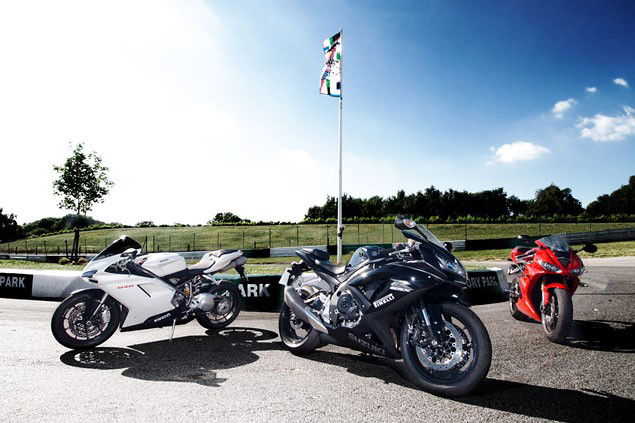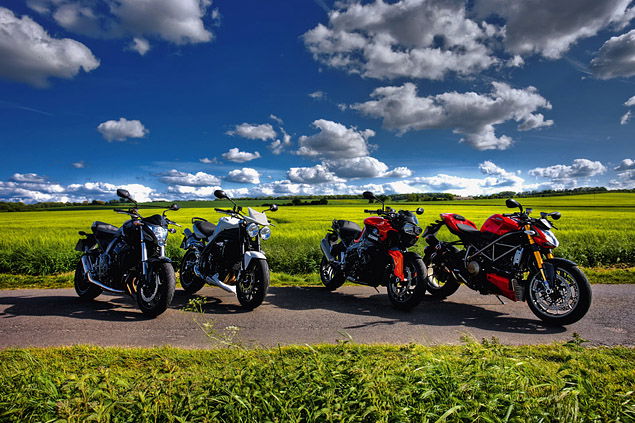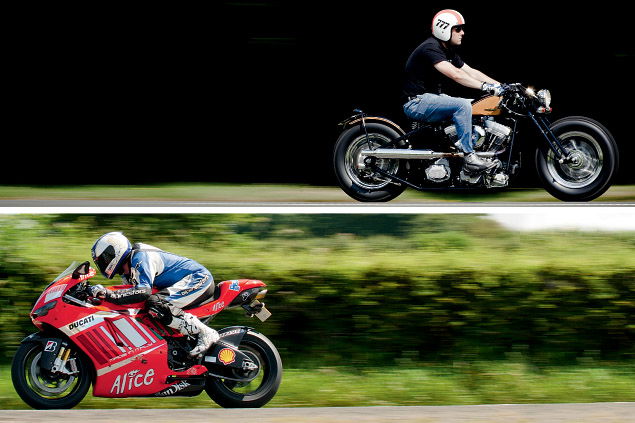Prime numbers - Triumph 675 v Suzuki GSX-R750 v Ducati 848
Operating outside the established 600cc and 1000cc classes, the Ducati 848, Suzuki GSX-R750 and Triumph 675 refuse to be pigeon-holed. But are they alternative oddities or right answers?


Once upon a time, engine configurations and capacities were pretty much a given. If you wanted a sportsbike you either plumped for a large, unwieldy 1000cc across-the-frame-four or, if you wanted handling, you went for a lighter, more agile 750.
If you were loaded then an exotic 1000cc twin fitted the bill nicely, while also reassuring everyone you were a classy guy with bags of taste and a bank balance to suit. Conversely, if you were that bit younger and couldn’t afford the ultimate, you’d go for a 600cc four.
It was so easy back then and, while 1000cc four-cylinder bikes have since slimmed down and powered up, there’s still a big debate over what makes a great sportsbike. Of course some maintain that horsepower rules, while the purists will always choose sublime handling and minimal weight.
These days things aren’t so black and white. 170bhp can be a bit much for many of us and for a variety of reasons, from riding experience through to running costs, bigger isn’t always better.
Suzuki is the sole survivor in the 750cc class with the brilliant GSX-R750, a four-cylinder bike that offers an exquisite balance of power and handling, essentially giving us a 600cc chassis with more midrange torque and 20% more horsepower.
Ducati has done away with its supersport-legal 750cc twin and plumped for an 849cc machine to run alongside the more expensive 1198. Cheaper to buy and insure, Bologna bills the 848 as an ideal entry into the world of Ducati exotica; same great looks as its bigger sibling, a similar chassis and that trademark V-twin boom from the dual underseat pipes all adding to the appeal.
And then of course we’ve got the Triumph Daytona 675. The only bike here eligible for top-class racing, the 675cc triple was a revelation when it was launched back in 2006.
Not much has changed since then and, to be fair, there wasn’t a lot that needed changing. With brilliant handling and a near-perfect blend of four-cylinder revs and V-twin torque, the three-cylinder Daytona has since proved more than a match for the Japanese competition, winning the British Supersport championship last year and, just recently, finally getting onto the podium at world championship level. The 675 really is a superb package, one with character and raw pace.
If that’s not proof enough that sometimes less is more, we took the bikes for a day on the bumpy and tight twists and turns of Mallory Park, followed by a road thrash and a dyno shootout.

